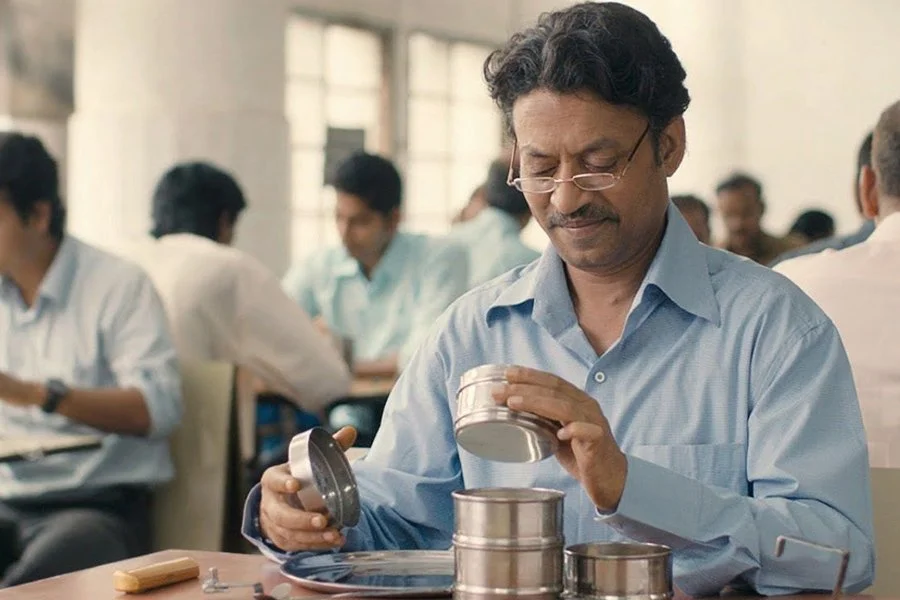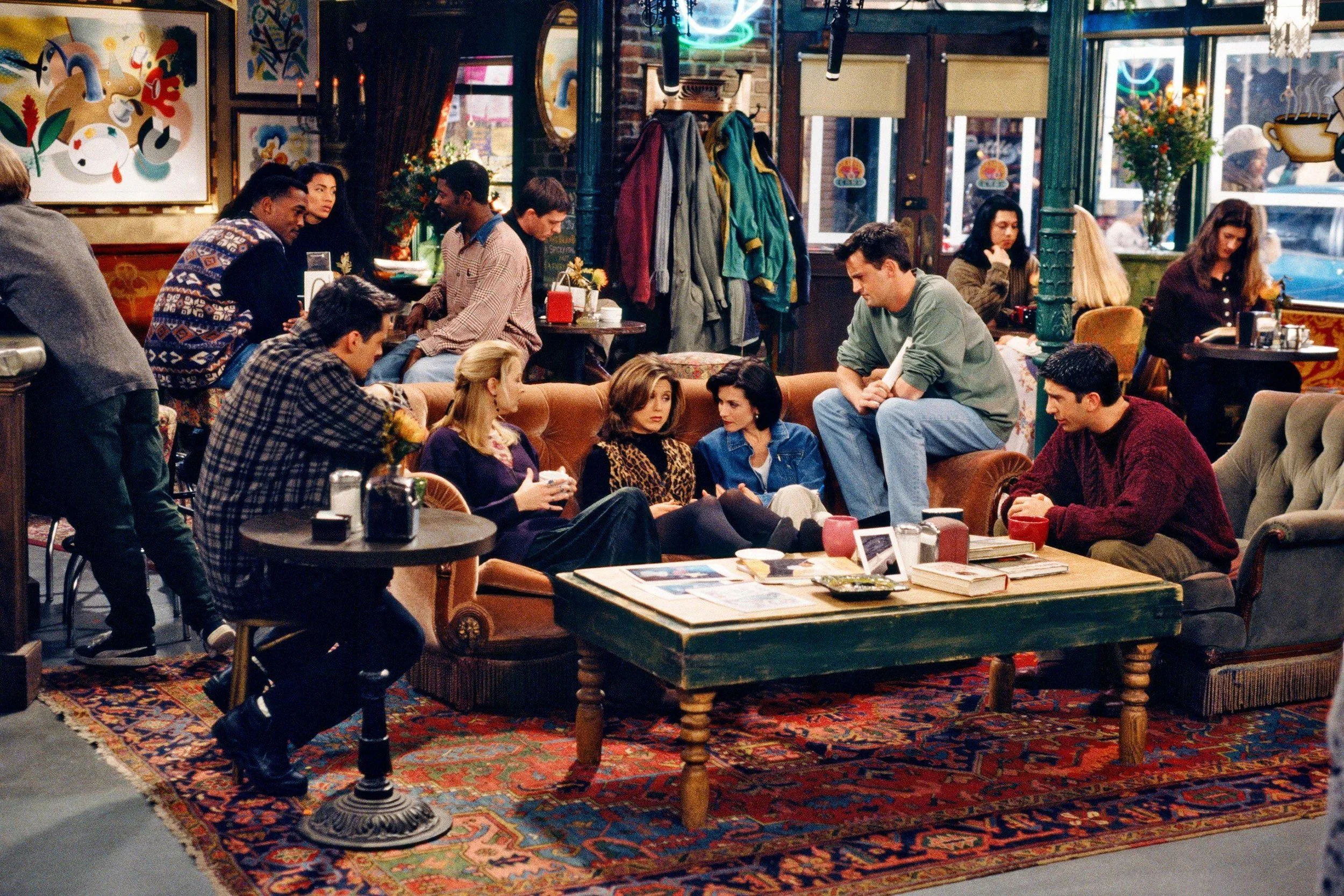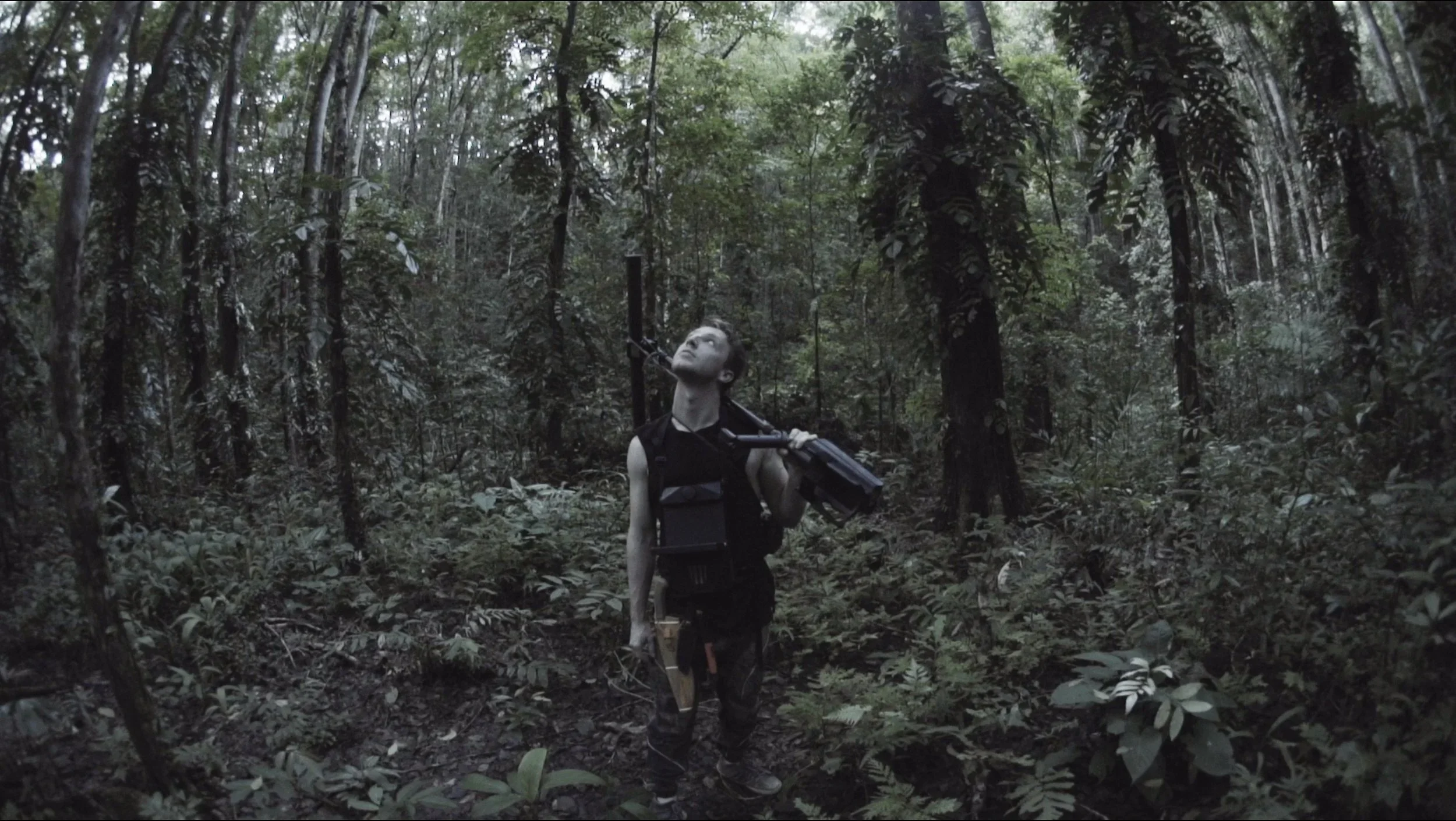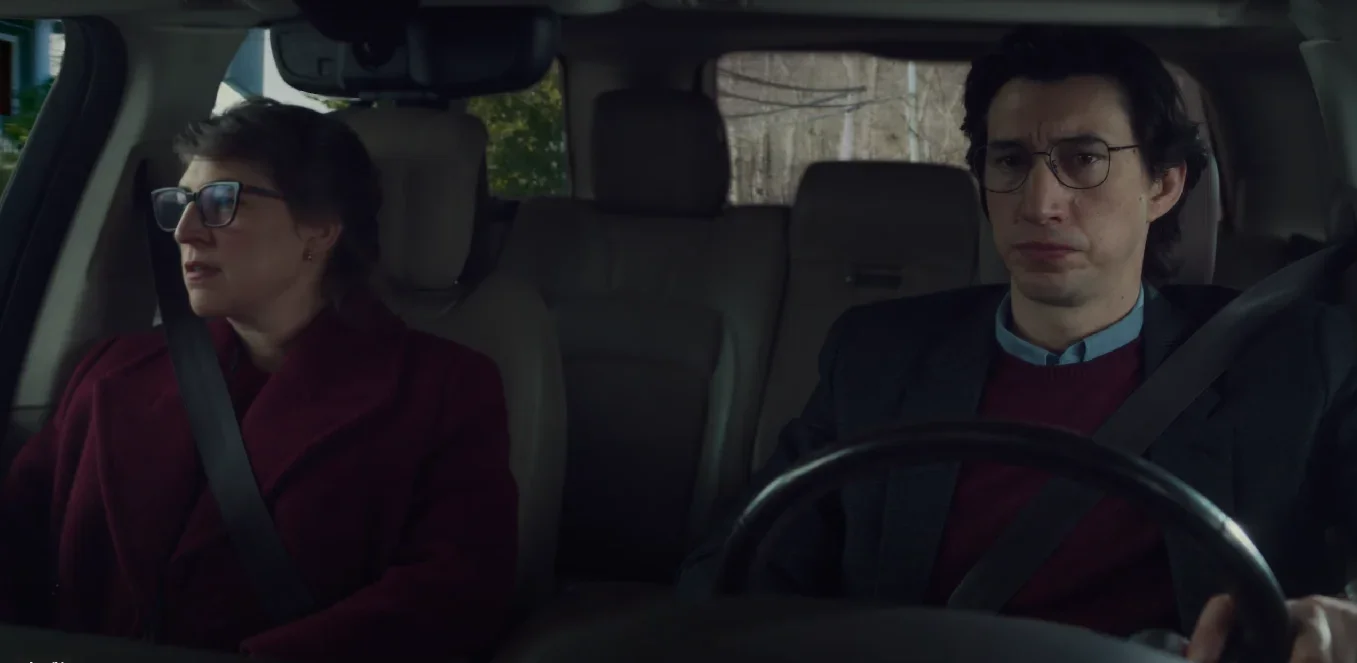When Third Space Becomes an Escape in ‘At Least We Had This Moment’
When Third Space Becomes an Escape in ‘At Least We Had This Moment’
Feature art by Abigail Manaluz
Society traps us in an endless loop of home and work. For two lost souls, finding a third space is resistance.
Set in the historic street of Escolta, Joshua de Vera’s At Least We Had This Moment follows Dino (Raven Rigor), a film photographer, and Vince (André Miguel), a local tour guide, as they wander off their intended path.
Escolta is not just a mere backdrop in the film, but it’s also a living character. Jeepneys, vendors, and pedestrians give the street a bustling life. Within this restless setting, de Vera grounds the story of two men searching for connection, tying their yearning for third space to a place that feels both strange and familiar.
“Na-realize ko na ito yung perfect place kasi para talaga siyang buhay (I realized this is the perfect place because it really feels alive),” he said. “At the same time, naghihintay rin ng bagong buhay because ang daming mga buildings that’s just there, parang just waiting for a new life to function (At the same time, it’s also waiting for a new life because there are so many buildings that are just there, as if waiting for a new life to function).”
After his previous film Please Remember This Night, which centers around how walking in the quiet of the night sparks meaningful connections, de Vera wanted to delve into liminal spaces as a universal one, and the randomness of the train station and the sidewalk as a setting. For this one, a found place was made home for Dino and Vince.
Rigor reflected on how Escolta opened realizations in him and its role in the development of his and Miguel’s characters.
“Being a character, I felt a sense of belongingness, at least. Even [for the first time] kong makakapunta doon sa Escolta (Even if it was my first time going to Escolta),” Rigor said
At Least We Had This Moment cast and crew from left to right: Leo Liban, Joshua de Vera, Raven Rigor, and André Miguel
“I think every place has a story pero hindi lahat ganyan ka-meaningful. Hindi lahat may way na ganyan (I think every place has a story, but not all are that meaningful. Not all have a way like that),” he added.
For Miguel, Escolta has its own stories to tell. The street is a culmination of the heartbreaks, celebrations, and dreams of its passersby. Since its establishment during the Spanish colonial period, the place also carries historical significance.
“[Escolta] used to be that great space and now, it [has] lost its glory. Now, it's trying to find a new life,” he said.
Just as how the film aims its story on tourism, photography, and yearning, so does its cinematography.
“May sarili siyang visual. Ang ganda naman ‘yung may sariling lente ‘to na hindi lang basta kinopya sa existing na visual (It has its own visual. What’s nice is that it has its own lens and isn’t just copied from an existing visual),” producer Leo Liban said.
“Every frame should look like a postcard. Para talagang time machine ‘yong film (Every frame should look like a postcard. The film should really feel like a time machine),” he added.
Liban also emphasized how this differed from other Boys’ Love stories (BLs), which are centered on romance and intimacy. While the film offers chemistry, Dino and Vince are also connected to the place that they are in.
This “visual feast” is a unique take for a BL in the Philippines. The genuineness of the storytelling and its originality have drawn several audiences to feel emotions during initial screenings of the film and appreciate its message.
Queer spaces in the Philippines continue to struggle for visibility. Without the comfort of home or the assurance of acceptance at work, identities are often left in limbo—unseen, uncelebrated.
Yet Dino and Vince defied this stagnancy. In Escolta, once the bustling heart of Manila’s business district, they carved out a space where queerness could breathe, thrive, and resist.



















